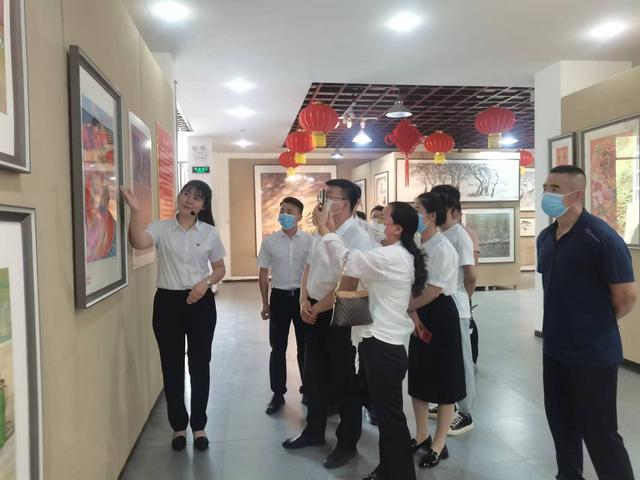What exactly did this classic of the treasure of the provincial Township Hall write?
Author:Taiyuan Culture and Tourism Bu Time:2022.09.26
As we all know, "The Seven Stars of the Beidou" is known as the treasure of the town hall of the Shanxi Provincial Library. In the three years of Yongxi in the Northern Song Dynasty (AD 986), it was engraved in Luzhou, Shanxi (Xinyi County, Shanxi). The earliest carving printing in the country was a milestone in the history of Shanxi's engraving books. In 2008, he was selected as the first batch of "National Performance Ancient Books List".

"The Seven Stars of the Beidou", also known as "The Buddha's Seven Stars of the Beidou", is suspected to be pseudo -sutra formed by the integration of the Beidou belief and Buddhist merits of the Tang Dynasty. Inside the scriptures, it has not been found in the Dunhuang papers. It is only seen in the "Dazheng New Tibetan Scriptures" compiled by the Dazheng period (1912-1926) in Japan, and it has been popular to this day.
Although this scripture is short, it is relatively complete. It details the appearance of the Beidou Seven Star and the Auxiliary Star God, the spiritual symbols, and the worship ritual.
The first is the image of the Beidou Qixingjun's hair and holding the board, followed by the spiritual symbols of each Xingjun. Each star is under the jurisdiction of people born at different hours. Buddhism, corresponding to the seven Buddhas in Buddhism, corresponds to it. The scriptures say:
Nanwu greedy wolf star is the most worldwide nominarian tokens in the East.
Nan Wujie Star is the ease of the world of Oriental Miaobao.
Nan Wulu Star is the golden achievement of the east to the Buddha.
Nan Wuwen Quxing is the most auspicious Buddha in the world.
Nan Wu Lian Zhenxing is a Buddha who lives in the world in the world.
Nanwu Wutu Star is the East Method World Fa Music Games Rulai Buddha.
Nan Wujun Star is the Buddha of the Eastern Liuli World Pharmacist Liuliguang.
If you encounter the annual disaster, the seven worship of this scripture.

Here, "greedy wolf", "giant door", "Lu Cun", "Wenqu", "Lianzhen", "Wuqu" and "Broken Army" all come from the Taoist Scriptures. Two o'clock in Beidou Seven Stars, as a destiny star, in charge of his life and death.
Under the influence of Taoism, the Buddhist scriptures gradually deduced Beidou Seven Stars and other star gods into the incarnation of Buddha and Bodhisattva.
It can be said that "The Seven Stars of the Beidou" is a Buddhist scripture derived from the Taoist Beidou belief.

Beidou is composed of the seven stars of Tianshu, Tianxuan, Tianzhang, Tianquan, Yuheng, Kaiyang, and Yaoguang. The ancient Han people associated these seven stars to imagine the shape of wine. The heavenly power forms the body, and Yuheng, Kaiyang, and Yaoguang make up the handle.

Because Beidou has the function of referring to the direction and the time calendar, it plays a very important role and significance for the ancient people's production and life and life, so Beidou gods were regarded as the supreme gods in charge of life and death in ancient times. The disaster relief, delaying their lives, and being worshiped and sacrificed by the ancestors.
Since the Han Dynasty, Beidou faith has been accepted by Taoism. In the Tang Dynasty, the star occupation and Beidou faith in Taoism have been absorbed by Buddhism. Based on this, some Buddhist scriptures related to Beidou were compiled.
In addition to the "Buddha's Seven Stars of the Beidou", the Secret Department of the Dazheng Tibetan also includes three Buddhist scriptures related to the Beidou belief, namely the Indian monk King Kong Zhi "The Seven Star Remoings Rites", the monk wrote " "Beidou Qixing Guoma Fa", Daxing Shan Temple turning through the "Beidou Qixing Mo Mo Mo Rites" described in the top of Ayei Pear. These four Buddhist scriptures are written in the Tang Dynasty, and they are closer to the content.

The "Buddha's Seven Stars of Beidou" in Shanxi Province's Book Hall has been disabled, and the text is also slightly different from the "Dazheng Tibetan". Because it has been given the mysterious color of extended life and disaster relief, it is deeply received by ethnic minorities. The respect of Buddhists has been translated into a variety of texts such as Huiwen, Mongolian, and Tibetan in the Yuan Dynasty.

Today, this precious Chinese Buddhist classic is exhibited in the form of a copy of the Wenyuan Academy in the Martial Arts History Reading Room. Essence
references:
Suluer, "The Examination of Han, Huizhu, and Mongolia," Examination of the Seven Stars of the Beidou "," Mongolian Scholarship Information ", No. 4, 2004.
Zhao Zhen, "The Seven Star Fate of Destiny" in the Dunhuang document -centered on P.2675 BIS "," Research on Dunhuang ", No. 2, 2006.
Zhu Lei, "Archeology Research of the ancient Beidou belief in China", a doctorate dissertation of Shandong University, 2011.
Master's article, "Research on Fate of Fate", Master's Dissertation of Chongqing University, 2012.
Wang Hongmei, "Exploration of the Beidou Faith in the Yuan Dynasty -Taking the Back to the Essays (the Buddha's Speaking of the Seven Stars of the Beidou" as an example "," Ethnic Forum ", No. 5, 2013.
Source: Tian Yuan, the Department of History and Literature, Shanxi Province

- END -
Tongyu County holds "Damei Xianghai Drunk Love Crane Township" Calligraphy Art Photography Art Exhibition

On June 29th, Gu Xuezhong Calligraphy Art Photography Art Exhibition Damei Xiangha...
Great Wall National Cultural Park is the new landmark of Beijing -Tianjin -Hebei

The Great Wall of Huangya Guan under the misty fog.The Great Wall of Wanli is like...